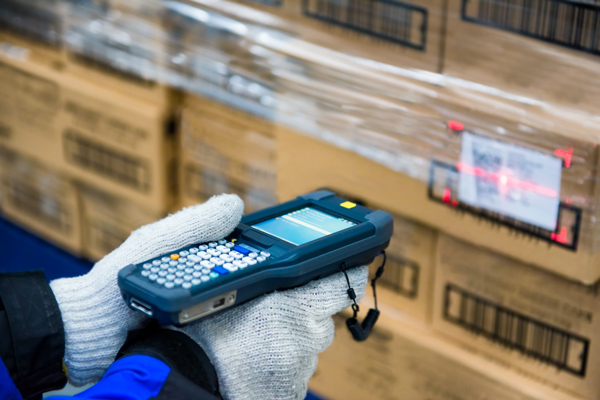
Mobile Barcode Barcode Scanners Used by Amazon to Manage Distribution Center Operations
Managing warehouse inventory is complex, to say the least. Mobile hardware systems are critical to tracking the thousands or millions of items in stock at any given time, especially across multiple locations or as these items make their way through the supply chain. When it comes to inventory management, global distribution giant Amazon stands out for its innovative approach to solving this very challenge.
For example, an article in the Edinburgh, Scotland, newspaper the Edinburgh Evening News discussed the importance of barcode scanners for Amazon’s warehouse and distribution center operations during the peak holiday season.
The article focused on a single Amazon distribution warehouse covering an area of 1 million square feet. On a typical day, around 100 delivery trucks will unload over 1,200 tons of items at 22 docking bays, where items are then checked and sorted before being scanned into the system by the receiving team. Products are sorted into totes and bins by dedicated stowers, who scan each item’s barcode with handheld scanners to record its bin location in Amazon’s inventory tracking system.
But the barcode scanners do more than make finding the location of each object—and fulfilling each order—faster, easier, and more efficient. With a warehouse arrangement that can look random to the untrained eye, these mobile barcode scanners provide pickers with the shortest route to each product throughout the warehouse.

7 Signs It’s Time for Mobile Barcoding
Driving Innovation to Meet Customer Needs

Making the Case for Mobile Barcoding
OS Systems are Changing
While innovation is important, keeping current mobile and handheld devices up to date is equally critical. For instance, starting in 2018 Microsoft will discontinue support for some versions of their handheld operating systems (OS) as these products reach their end of life:
- Windows Embedded CE 6.0: Support ends April 10, 2018
- Windows Embedded 8.1 Handheld: Support ends July 9, 2019
- Windows Embedded Handheld 6.5: Support ends January 14, 2020
Organizations forced to migrate off legacy Windows mobile operating systems and onto Android and iOS may have to spend hundreds of thousands or even millions of dollars in new hardware and software. Developing mobile apps that only run on only one mobile operating system locks the enterprise into that platform—a very expensive mistake if you bet on the wrong OS.
Instead of losing sleep over which enterprise mobile OS will rule the day, IT executives should focus on developing multi-platform apps that will run on any device, regardless of operating system. With mobility evolving at such a rapid pace, it’s likely that your organization will require different devices and/or operating systems to best serve each part of your business and maximize warehouse efficiency.







